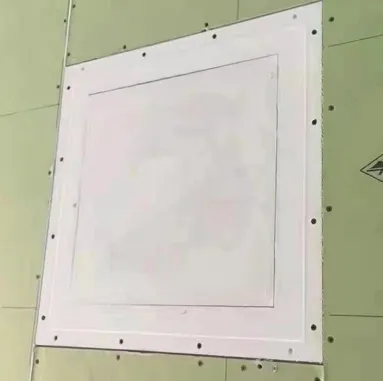Feb . 17, 2025 12:23 Back to list
mineral fiber ceiling tiles
Understanding the composition and benefits of mineral fiber ceiling tiles can illuminate their rising popularity in both residential and commercial spaces. Known for being a versatile and sustainable option, these ceiling tiles are a testament to modern manufacturing's strides in building materials. Below is an exploration into their composition, benefitting various stakeholders from architects to homeowners.
A key advantage of mineral fiber ceiling tiles lies in their adaptability and design versatility. Available in a wide range of finishes, patterns, and colors, they can complement diverse interior design themes, from contemporary minimalism to classic elegance. This level of customization supports designers in creating unique spaces without sacrificing practicality or performance. From an acoustic perspective, these ceiling tiles excel in sound absorption and reduction, validated by high Noise Reduction Coefficient (NRC) ratings. This functionality significantly boosts their suitability for spaces where sound management is pivotal, such as auditoriums, libraries, and shared office spaces. Moreover, installation is a straightforward process, often achievable through suspended ceiling systems. This allows for easy access to the building infrastructure, such as electrical wiring and plumbing, for maintenance and repairs without disturbing the room's aesthetic. The ease of installation and maintenance is an attractive feature for contractors and building managers seeking time-efficient solutions. Overall, the inherent benefits and composition of mineral fiber ceiling tiles make them a practical and forward-thinking choice in modern construction. Their blend of sustainability, safety, and acoustic properties, coupled with cost-effectiveness, positions them as a smart choice for those aiming to adhere to contemporary building standards while addressing aesthetic and functional needs. By focusing on eco-friendly materials and innovative manufacturing processes, mineral fiber ceiling tiles not only meet but exceed expectations across several industrial benchmarks. For professionals in architecture and construction, understanding these benefits is crucial for informed decision-making and client satisfaction in both new installations and renovations. As the trend towards environmentally responsible building practices continues to rise, mineral fiber ceiling tiles offer an exemplary solution, harmonizing environmental considerations with outstanding functionality and design.


A key advantage of mineral fiber ceiling tiles lies in their adaptability and design versatility. Available in a wide range of finishes, patterns, and colors, they can complement diverse interior design themes, from contemporary minimalism to classic elegance. This level of customization supports designers in creating unique spaces without sacrificing practicality or performance. From an acoustic perspective, these ceiling tiles excel in sound absorption and reduction, validated by high Noise Reduction Coefficient (NRC) ratings. This functionality significantly boosts their suitability for spaces where sound management is pivotal, such as auditoriums, libraries, and shared office spaces. Moreover, installation is a straightforward process, often achievable through suspended ceiling systems. This allows for easy access to the building infrastructure, such as electrical wiring and plumbing, for maintenance and repairs without disturbing the room's aesthetic. The ease of installation and maintenance is an attractive feature for contractors and building managers seeking time-efficient solutions. Overall, the inherent benefits and composition of mineral fiber ceiling tiles make them a practical and forward-thinking choice in modern construction. Their blend of sustainability, safety, and acoustic properties, coupled with cost-effectiveness, positions them as a smart choice for those aiming to adhere to contemporary building standards while addressing aesthetic and functional needs. By focusing on eco-friendly materials and innovative manufacturing processes, mineral fiber ceiling tiles not only meet but exceed expectations across several industrial benchmarks. For professionals in architecture and construction, understanding these benefits is crucial for informed decision-making and client satisfaction in both new installations and renovations. As the trend towards environmentally responsible building practices continues to rise, mineral fiber ceiling tiles offer an exemplary solution, harmonizing environmental considerations with outstanding functionality and design.
Latest news
-
Durable Ceiling T Grid Systems | Easy InstallationNewsAug.29,2025
-
PVC Gypsum Ceiling: Durable, Laminated Tiles for Modern SpacesNewsAug.28,2025
-
Pvc Gypsum Ceiling Is DurableNewsAug.21,2025
-
Mineral Fiber Board Is DurableNewsAug.21,2025
-
Ceiling Tile Clip Reusable DesignNewsAug.21,2025
-
Ceiling T Grid Modular DesignNewsAug.21,2025







